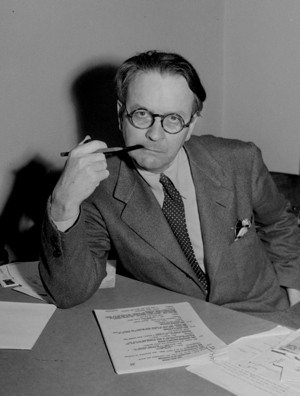Why Procrastination Doesn’t Need a Cure: A Guide to Structured Distraction

Recently, I read a great book and promised to mail it to a friend overseas when I was done… about nine months ago. Today, I finally wandered down to the post office and mailed it, because the alternative was working on this blog post. This is classic procrastination at work.
If you’ve noticed yourself doing this as well, you might have explored “cures” for procrastination, or tips to improve your productivity. I’ll admit, I’ve spent many hours procrastinating by exploring these very things. And we’ve even written a huge amount about these topics on here.
Somehow, the irony of wasting time reading about how to not waste time is never enough to get me moving.
The interesting thing about procrastination is that we generally equate it with “being lazy” or “wasting time,” and thus see it as a very negative trait—one to be fixed or avoided. A New Yorker article explained how detrimental procrastination can be, psychologically:
The essence of procrastination lies in not doing what you think you should be doing, a mental contortion that surely accounts for the great psychic toll the habit takes on people. This is the perplexing thing about procrastination: although it seems to involve avoiding unpleasant tasks, indulging in it generally doesn’t make people happy.
One study on procrastination showed that 65% of the students surveyed knew that procrastination would make them unhappy and wished to avoid it. It might be, however, that procrastinating can actually help us get more done—at least more of the important things. Let’s take a look at how procrastination really works, and why it might not be so bad, after all.
Why we procrastinate
The science of procrastination shows that it comes from two forces battling against each other in our brains. One is the limbic system, which is the “unconscious zone that includes the pleasure center.” The other is the prefrontal cortex, often known as the “internal planner.” So the limbic system fights for short-term pleasure, i.e. what we want right now., while the prefrontal cortex fights for what’s best for us in the long run.
According to Timothy A. Pychyl Ph.D., author of Solving the Procrastination Puzzle: A Concise Guide to Strategies for Change, the prefrontal cortex is the portion of our brains that really separates us from animals, who are “just controlled by stimulus.”7 Unfortunately, there’s nothing automatic about this newer, weaker area of our brains. Unlike the limbic system, we really need to consciously kick it into gear to get things done.
The limbic system, on the other hand, will take over as soon as we’re not consciously pushing forward on a task and make us give in to what feels good—i.e. procrastinating.
So our procrastination effectively comes down to our biology. In fact, the economist George Ainslie even said that procrastination “could well be called the basic impulse.”
Entrepreneur and investor Paul Graham has seen more than his fair share of procrastinators. He even says that the most impressive people he knows are all [“terrible procrastinators.]5” Paul has a couple of theories about why we procrastinate. One looks at the disconnect between working on important projects and the rewards we receive for finishing them:
If you work on something you can finish in a day or two, you can expect to have a nice feeling of accomplishment fairly soon. If the reward is indefinitely far in the future, it seems less real. 5
Secondly, Paul points to the fear that comes with working on big, important projects:
Big problems are terrifying. There’s an almost physical pain in facing them.
You’ve probably come across this before. It’s what happens when we want to take on an ambitious project, and we suddenly find all manner of unavoidable obstacles in our way. When running errands takes up so much time that we can’t even begin to write our novel, it’s often because fear is holding us back and our limbic system is taking over—protecting us from the unpleasantness that is fear, and taking us toward the familiar buzz of “getting things done” that meaningless errands can give us.
James Surowiecki explained in the New Yorker that many procrastinators are self-handicappers: “rather than risk failure, they prefer to create conditions that make success impossible, a reflex that of course creates a vicious cycle.”
Why procrastination doesn’t need a cure

It’s true that most of us see procrastination as a bad thing, and it’s not difficult to find hundreds of articles or books telling us how to cure or overcome this flaw. But as Paul Graham says, strictly speaking, it’s impossible to cure procrastination:
No matter what you work on, you’re not working on everything else. So the question is not how to avoid procrastination, but how to procrastinate well.
Paul breaks down procrastination into three variants, depending on what you do instead of doing your work:
- you do nothing
- you do something less important
- you do something more important.
It’s easy to see how type three procrastination can actually be really beneficial to us. Instead of running errands, writing emails or doing housework, we could be focusing on our most important work.
On the other hand, John Perry, a Professor Emeritus at Stanford, wrote in the Huffington Post that type two procrastination can lead to us producing better work when we get around to it. He said that since many procrastinators are perfectionists who dream of doing a perfect job of those most important tasks, putting them off can be beneficial:
Leaving it till the last minute is a way of giving oneself permission to do a merely adequate job. 99 percent of the time a merely adequate job is all that is needed.
Another benefit of type two procrastination that’s sometimes pointed out is that we often have tasks to do that are not really important. By putting them off, they’ll disappear eventually anyway, and we’ll save ourselves from doing unimportant work. I’ll let you decide whether you want to test this theory, though!
Good procrastination
So if we want to harness our procrastination into a positive trait, there are a couple of theories about how we can do this. The first is Paul Graham’s idea of type three procrastination, or “good” procrastination.
This is when we procrastinate on unimportant tasks, for instance errands or “busy work” so we can spend more time on our most important work. If I had worked on this post instead of going to the post office, that would be a good example.
Errands is a particular type of distraction that Paul advocates for procrastinating against:
There’s more to do than anyone could. So someone doing the best work they can is inevitably going to leave a lot of errands undone. It seems a mistake to feel bad about that.
There’s an important reason that leaving busy work undone is useful for getting big projects done. Our important projects usually require two things that errands or busy work don’t: large amounts of time, and being in the right mood. When we’re inspired to work on something important, it would be a mistake to waste that inspiration on getting unimportant tasks done, because we think we should. Channeling our energy into our big projects whenever we can might mean we don’t keep up with household chores and smaller tasks, but perhaps Paul is right that this is a good thing.
Work on an ambitious project you really enjoy, and sail as close to the wind as you can, and you’ll leave the right things undone. 5
Structured procrastination

The other side of the “positive procrastination” coin is the theory of structured procrastination, which John Perry advocates as being the best way to channel natural procrastination tendencies into productivity. As he explains it, structured procrastination is:
an amazing strategy I have discovered that converts procrastinators into effective human beings, respected and admired for all that they can accomplish and the good use they make of time.
Structured procrastination is essentially type two procrastination, as mentioned above, although the art of tricking ourselves about the importance of our tasks comes into play as well. The idea is that while we think we are working on less important tasks as a way to avoid the big projects we should be doing, we are in fact tricking ourselves into working on our most important projects after all.
The practice exploits the fact that we generally list our tasks by order of importance. More urgent or important tasks sit at the top of our to-do lists, although many other important tasks will also be listed. Natural procrastinators will usually avoid those important and difficult (or fear-inducing) tasks at the top of the list in favour of easier, smaller tasks further down.
In this way, type two procrastinators can in fact get a lot done, so long as it helps us to avoid those big projects we think we should be doing.
In 1930, Robert Benchley wrote this appropriate quote:
The psychological principle is this: anyone can do any amount of work, provided it isn’t the work he is supposed to be doing at that moment.
What makes this strategy productive, however, is when we twist it to our advantage. By adding tasks to our to-do lists that seem urgent or important, but actually aren’t, we can trick ourselves into doing things that really need to be done, since we think we’re procrastinating on bigger tasks.
Piers Steel, a psychologist at the University of Calgary pointed out that many procrastinators are already good at the kind of self-deception needed to wrangle our procrastination skills into useful habits:
Productive procrastination is a bit of make-believe, along the lines of setting your watch five minutes fast. You know you did it, but you still pretend you didn’t.
How to make procrastination work for you
If you’re a chronic procrastinator like me, here are some strategies to pull your procrastinating into line and get more done.
Start small
Paul Graham makes a good point that working on our biggest, most important projects can be so scary and overwhelming that we sometimes need to work up to it. He suggests working on small tasks that can grow into big projects, or starting small and working up to larger tasks. We can also collaborate with others so that our part is smaller than the whole project, but we still have a hand in doing important work.
Adjust your to-do list
Using John Perry’s structured procrastination strategy, try adding tasks to the top of your list that seem to have urgent deadlines or to be incredibly important, but in fact can either be safely put off until later or not done at all. The tricky part is getting yourself to believe that these tasks are important and difficult, so that you’ll complete other tasks on your list in order to avoid them.
We’ve also talked before about the best ways to create a meaningful to do list, which might be a good place to start.
If you can successfully implement this strategy, you’ll be well on your way to getting more done and being a productive procrastinator!
Set boundaries

Novelist and screenwriter Raymond Chandler understood his own procrastination tendencies and used boundaries to help himself get work done. He used to force himself to write by setting aside writing time every day and ensuring he followed two basic rules:
- You don’t have to write.
- You can’t do anything else.
In order to avoid the tedium of sitting idle for four hours per day, he became a highly productive writer.
He explained how this same strategy applies to children in schools:
If you make the pupils behave, they will learn something just to keep from being bored.
We’ve explored before in our scientific guide to saying “no” how important it is to be able to prioritize relentlessly.
Increase your commitments
According to John Perry, procrastinators often try to reduce their commitments, hoping that with fewer things to do, they’ll actually get more done. John explained, however, that this removes the procrastinator’s most important source of motivation by removing any choice between important and unimportant tasks. With only a few tasks on your to-do list, you can only procrastinate by doing nothing:
This is a way to become a couch potato, not an effective human being.
So the lesson of all this research seems to be that procrastination is not uncommon, nor is it necessarily a bad thing. In learning to wrangle our tendencies to procrastinate, we can effectively get more done.
What are your procrastonation habits like? Have you found a good way to overcome them? Let us know in the comments.
If you enjoyed this article you might also like “The surprising history of the to-do list and how to design one that actually works” and “A scientific guide to saying “no”: How to avoid temptation and distraction”
Image credits: GrowHack, Mother Nature Network, Venture Galleries
Try Buffer for free
140,000+ small businesses like yours use Buffer to build their brand on social media every month
Get started nowRelated Articles
We’ve written about creativity a few times on the Buffer blog, but it’s hard to keep track of everything we learn about it. One day I’m adjusting the temperature in my workspace, and the next I’m trying to put off creative work until I’m tired. If you’re in the same boat, and you find it’s difficult to remember what will improve your creativity and when you should do your most creative work, hopefully this list will help you get it all straight. 1. Your brain does better creative work when yo
I’ve noticed that the way I spend my lunch break affects how productive I am for the rest of the day: how quickly I get started once I get back to my desk, how effective I am in the first hour after lunch, and how I feel throughout the afternoon. Luckily, we’ve been writing about ways to improve your day for a while now: from tips on making your environment more conducive to creativity to pushing through writer’s block. Why shouldn’t the humble lunch break get the same treatment? I gathered th
Constraints can seem like the last thing you’d want for a creative project, but they’re actually beneficial when it comes to doing good work. If you’ve ever faced the common writer’s hurdle of the blank page, you’ll know what it’s like to be paralyzed by innumerable opportunities. What restrictions do is take away some of the choices available to us, and with them, the paralysis of choice that stops us from getting started. We love trying things that seem counterintuitive at Buffer, but we espe